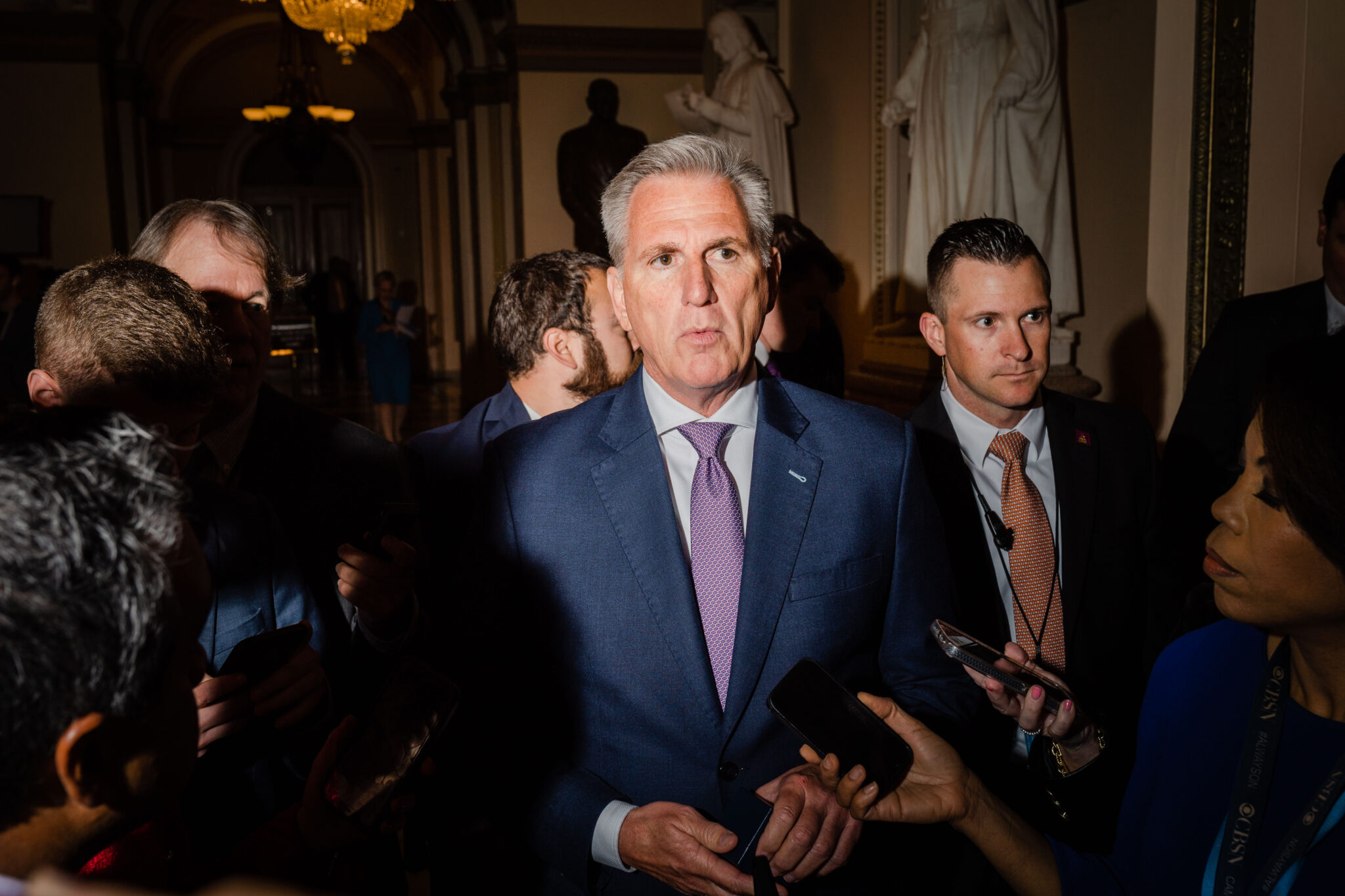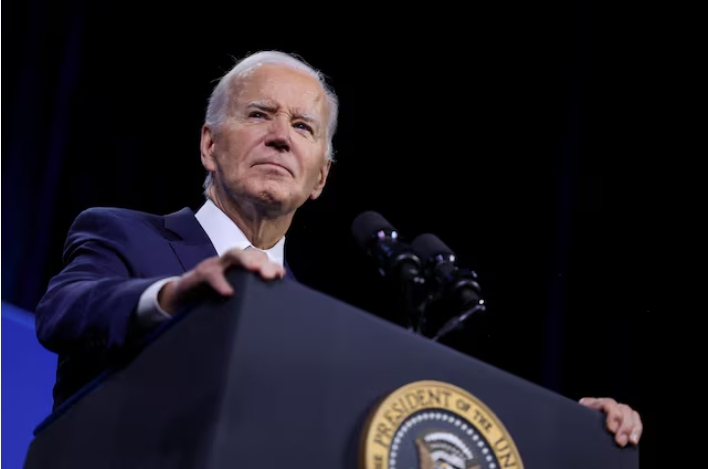 Speaker of the House Kevin McCarthy (R-CA) is surrounded by reporters after he leaves the House Floor to return to his office at the U.S. Capitol on Wednesday, April 19, 2023 in Washington, D.C. McCarthy delivered remarks on the House floor, accounting the GOP's debt limit bill, which they call the Limit, Save, Grow Act. Credit: Kent Nishimura / Los Angeles Times via Getty Images
Speaker of the House Kevin McCarthy (R-CA) is surrounded by reporters after he leaves the House Floor to return to his office at the U.S. Capitol on Wednesday, April 19, 2023 in Washington, D.C. McCarthy delivered remarks on the House floor, accounting the GOP's debt limit bill, which they call the Limit, Save, Grow Act. Credit: Kent Nishimura / Los Angeles Times via Getty ImagesHouse Speaker Kevin McCarthy, who has become beholden to a handful of far-right GOP lawmakers, is on a quest to slash federal spending. On Wednesday, the California Republican reluctantly agreed to raise the nation’s debt ceiling by $1.5 trillion for about a year, but not without demanding major concessions from Democrats.
McCarthy’s bill, called the Limit, Save, Grow Act of 2023, would slash more than $4.5 trillion from future federal spending by limiting discretionary funds, eliminating Biden’s student loan forgiveness plan and cutting financial commitments meant to revamp the Internal Revenue Service. It also targets the foundational provisions of the Inflation Reduction Act, the Democrats’ marquee climate law that passed last year.
That bill dedicates around $370 billion to fighting climate change, largely through tax rebates and other government credits that incentivize consumers and businesses to adopt clean energy technologies and electric vehicles. McCarthy’s proposal would repeal the vast majority of those. They include the tax credits for EVs, clean hydrogen, sustainable aviation fuel and even the credits that would reward energy providers for building more solar and wind power systems—even more so if they build them in low-income neighborhoods.
McCarthy also slipped the Republican’s energy plan, known as H.R. 1, into his debt ceiling bill. That measure, which passed the House mostly along party lines last month, would speed up the federal approval of energy projects, bolster domestic oil and gas production and limit the ability of states to reject energy projects.
The Limit, Save, Grow Act “would end the green giveaways for companies that distort the market and waste taxpayer money,” McCarthy said, speaking from the House floor on Wednesday. “Goldman Sachs says the savings from ending these green giveaways are as much as $1.2 trillion.”
Raising the debt ceiling ensures the federal government can pay the financial commitments it has already made and is different from allocating the federal budget, which is when lawmakers decide how they’ll spend taxpayer dollars. And experts say failing to raise that limit after Congress has already made its budgetary commitments could be detrimental to the economy if the U.S. ends up defaulting on its bills.
Think of it like asking your friend to pick up a soda on the way over to your house, promising to pay your friend when they arrive. But when they show up with a Coca-Cola, you decide you’ve changed your mind and don’t reimburse them. The next time you ask for a similar favor, chances are your friend won’t want to risk it. Their trust in you is shot. Similarly, Congress is now being asked to raise its borrowing limit to accommodate the purchases it has already promised to make. Failing to do so, analysts say, could spoil America’s credit score and cause financial shock waves globally.
The U.S. has never defaulted on its loans. In 2011 it came close, and the nation’s credit rating dropped for the first time from a AAA score to a AA+ score. The change sent global markets into a freefall.
Lifting the debt ceiling was once a fairly routine vote, as NPR’s Scott Neuman and Scott Horsley explain. Since 1960, they said, Congress has raised the ceiling 78 times—49 times under Republican presidents and 29 times under Democratic presidents. In fact, former President Donald Trump raised or suspended the debt ceiling three times while in office, allowing the national debt to balloon by nearly $8 trillion.
In recent years, however, the debt ceiling debate has fallen victim to the nation’s increasingly polarizing culture wars. In January, Trump encouraged McCarthy and other congressional Republicans to use the debt ceiling as a bargaining chip, telling them to play it “tough.”
McCarthy’s proposal this week has virtually no chance of passing the Democratically-held Senate. Democrats have said they hope to pass a “clean” debt limit bill. Still, the GOP move signals that the battle over national climate policy is far from over, and tying climate measures to a must-pass-bill like the debt ceiling legislation could encourage Democrats to water down or even roll back some of the IRA’s credits to avoid default. It could even be an ominous sign for global climate efforts more broadly.
On Thursday, Biden announced a series of environmental spending measures timed to coincide with Earth Day, including a pledge to invest $500 million over five years to protect Brazil’s Amazon rainforest. The Amazon remains one of the world’s largest and most important carbon sinks, meaning it absorbs and stores atmospheric carbon dioxide. But the Amazon continues to see historic levels of deforestation, driven largely by illegal logging and clearcutting to make room for agriculture, even after Brazil’s leaders promised to address the issue.
But that $500 million commitment needs congressional approval or it becomes an empty promise. And if this week’s fighting over the debt ceiling has revealed anything, it’s that cooperation in Congress is in short supply.







